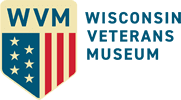Much like a person would customize a car, nose art on airplanes grew out of the crewmen’s desire to personalize their crafts. Beginning in World War I, European forces decorated their planes with fierce animals, family crests and other symbols. When the American forces arrived, they quickly followed the European’s lead and decorated their planes, in addition to marking them with the newly required unit insignia.
During World War II, nose art became extremely popular as a means of distinguishing planes, creating a groups identity and bonding crew to craft. Nose art themes ranged from the popular pin-up model to lucky symbols, mascots, scenes of victory, and landscapes. While use of the female form became iconic, viewed today the portrayal of women as objects is offensive; the stereotyped depictions of other groups is likewise objectionable and racist. Because of the evolution of accepted norms and museum editorial standards, the majority of the images of nose art in the museum collection is unpublishable. Even during WWII, military regulations prohibited the more risqué-style work, but with troops all around the world, regulations like this were hard to enforce and were often overlooked in favor of building morale. To skirt the rules, some crews used water-soluble paints for their designs knowing that the next rain storm would erase their mischief.
Of course, not all nose art was controversial. There are also examples where the planes were nicknamed for sweethearts and wives which we have included in the photo gallery.
Toward the end of the war, restrictions were more strictly enforced after the pin-up art fell out of style. Today, aircraft are still decorated with fierce shark teeth and lucky symbols replacing gendered artwork.
To view the captions for the images at right, hover over the image to enlarge it, and click on the "i" at the bottom.
Article written by Brittany Strobel, Wisconsin Veterans Museum Processing Archivist

